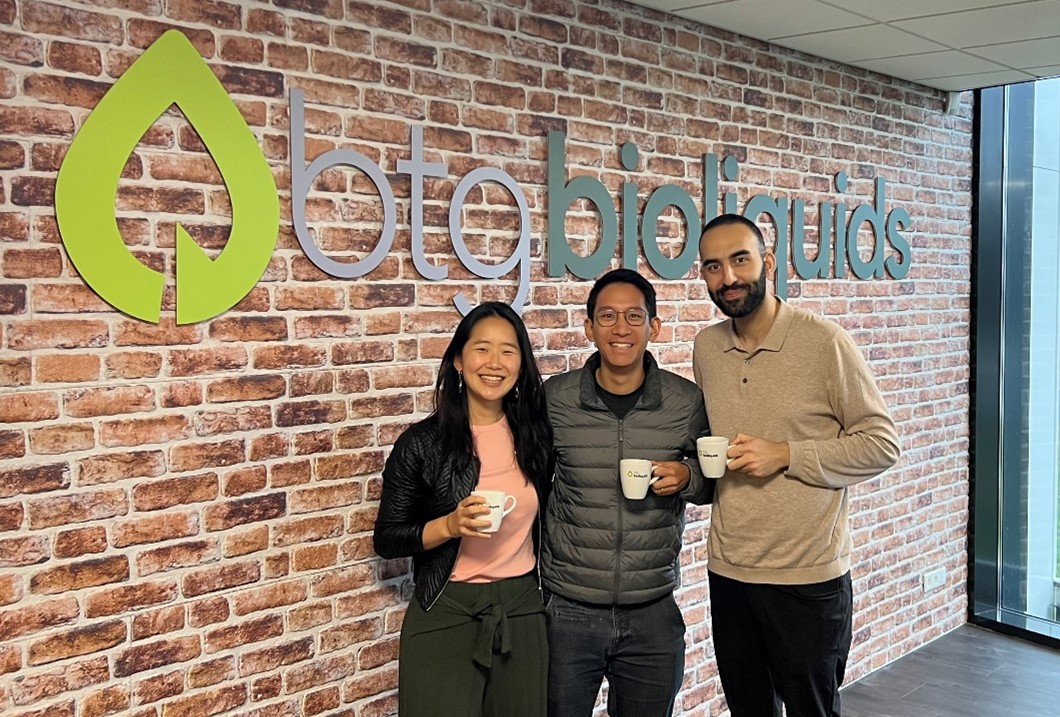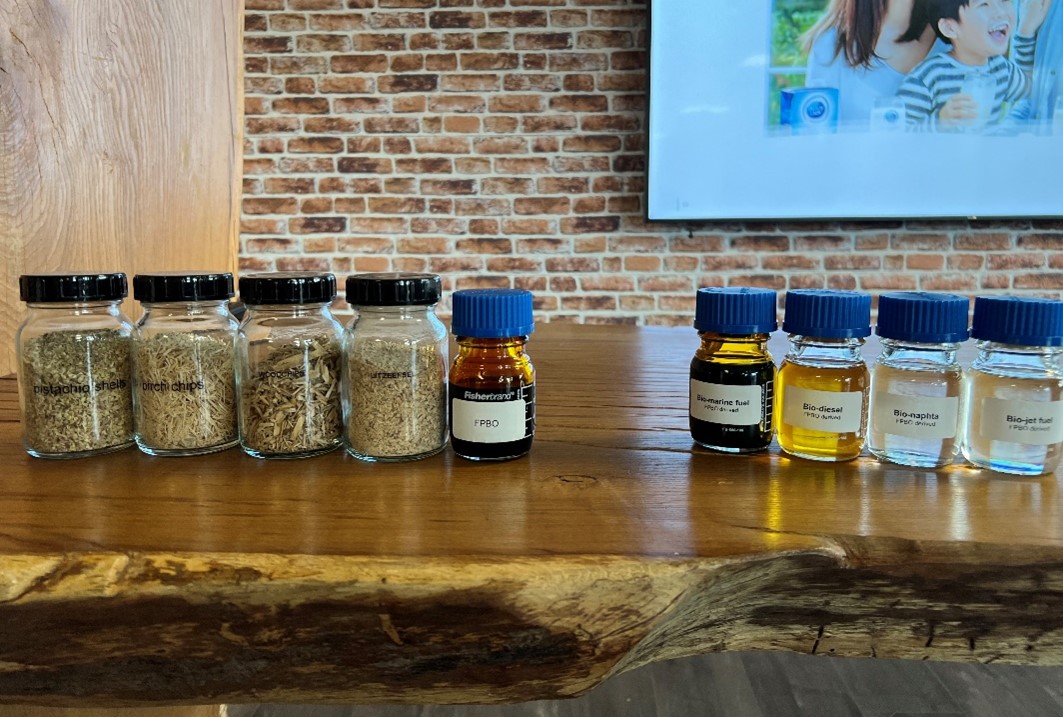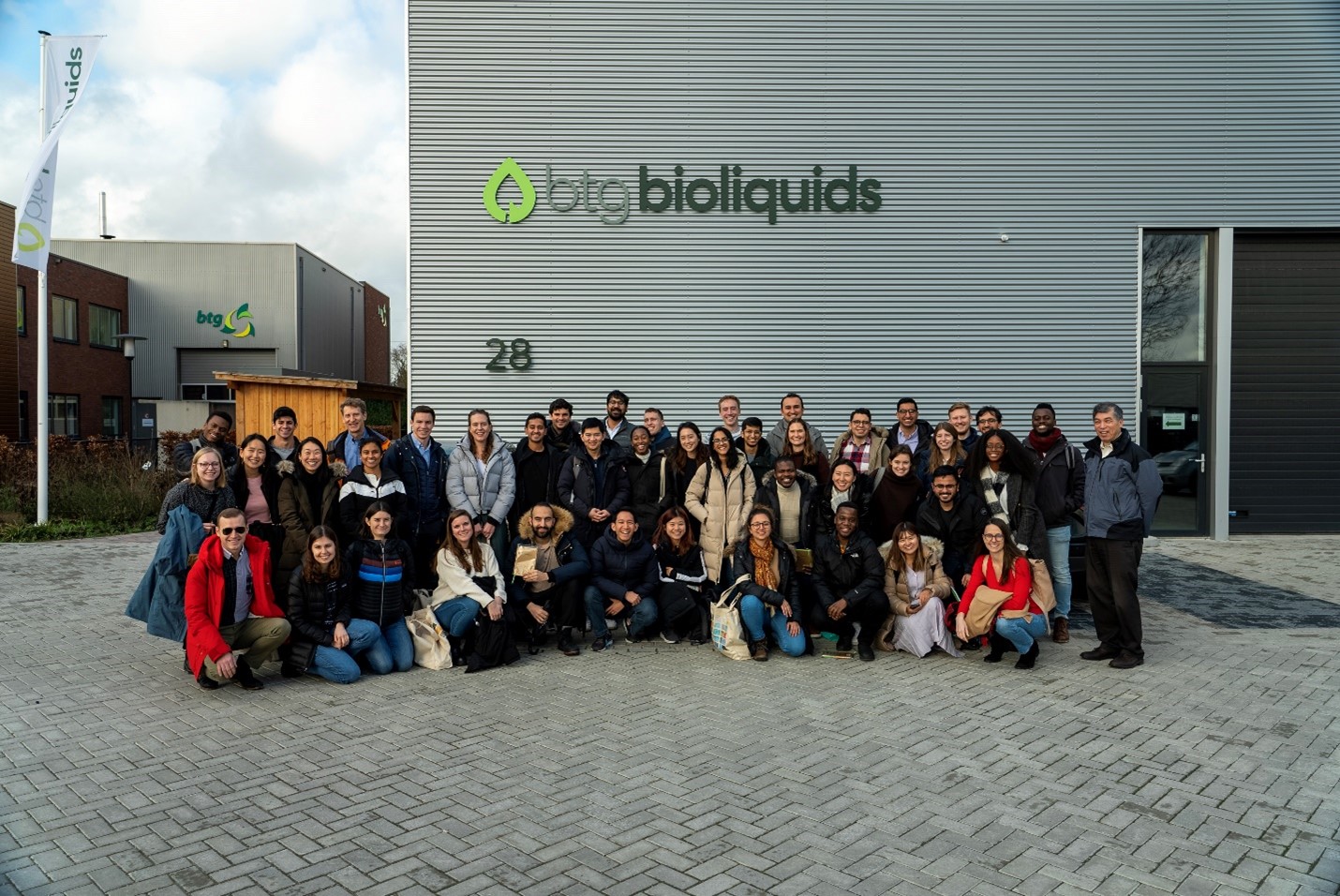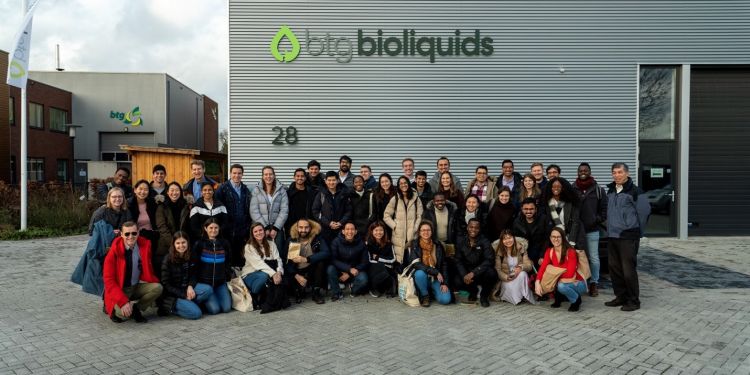In January 2023, Professors Willy Shih and Mike Toffel led more than 40 HBS MBA students on site visits to witness the energy transition and innovative sustainable production activities throughout Denmark and the Netherlands, in their new Immersive Field Course (IFC). This is one of 13 student essays posted on the HBS Business and Environment Initiative’s Blog that highlights their reflections. Learn more about this IFC course on Decarbonization and Sustainable Production by watching this five minute video summary.
As part of the Immersive Field Course on decarbonization, our group met with the leadership team of BTG Bioliquids in Enschede, the Netherlands, to learn about their fast pyrolysis technology, which converts second-generation biomass residues into bio-oils and other useful renewable bio-chemicals.

BTG Bioliquids company profile
BTG Bioliquids has developed a fast pyrolysis technology that enables its customers to convert biomass residues into fast pyrolysis bio-oil (FPBO), which has lower carbon intensity than traditional fossil fuels—roughly 90% less than natural gas. The three main uses for FPBO are sustainable transport fuel, bio-based chemicals, and heat. FPBO has the advantage of being a liquid, which facilitates storage and transport, and can be used as a drop-in for traditional oils, allowing the use of existing infrastructure. In refineries, for example, the product can be blended up to 10% without the need to retrofit or replace the existing assets.
BTG Bioliquids first fast pyrolysis facility, Empyro, was financed by the EU and Dutch development funds and some private investors. Its business case was bolstered due to support by the SDE Netherlands program that provided subsidies for low-carbon production, and by the Netherlands adopting the EU’s revised Renewable Energy Directive (RED II), which established regulatory targets for clean transport fuels. Interestingly, the breakeven carbon price for this technology to compete with traditional fossil fuels was in line with what other companies supported: $100-150/ton of CO2.
For their business model, BTG Bioliquids chose the technology licensing route, instead of a capital-intensive model where they would build and operate their own facilities. As a research and development company, BTG Bioliquids sees their competitive advantage in product/engineering innovation and flexibility in having a small team. As regulation evolves in Europe, BTG Bioliquids is also looking at the U.S. market, due to the recent passage of the Inflation Reduction Act.
In combination with our Maersk visit, we noted that FPBO is a possible pathway for decarbonizing maritime fuels and they had spoken to BTG Bioliquids, completing the circle of interconnected sustainability goals.

What we learned about BTG Bioliquids and biofuels
We left our visit with some key considerations and food for thought.
First, it was interesting to witness how threat and opportunity are merely different sides of the same coin. While the Russia-Ukraine war has caused significant harm to Europe, particularly as it pertains to energy prices, European nations used this as a catalyst of opportunity to transition to more renewable energy sources given the more expensive traditional sources currently available. While Europe feels the brunt of these impacts, we wondered what catalytic moment might happen in North America or elsewhere to accelerate the clean energy transition.
Second, we learned about the important considerations regarding biomass supply. While BTG Bioliquids converts biomass residues to fuel, it begs the question of whether the land we use to source biomass should be used for human consumption, such as food production, or used for energy production instead. BTG Bioliquids uses wood instead of livestock derivative products, and avoids deforestation concerns by relying on second generation biomass residues such as woody crops and agricultural wastes.
Lastly, during our visit we learned that the volatility of the input prices can have a profound impact on renewable energy production. The price of the biomass sourced to produce fast pyrolysis bio-oil fluctuates greatly. In fact, since BTG Bioliquids first designed production facilities, the price of these inputs have skyrocketed by 5x. This has forced one of the facilities to temporarily shut down their production. BTG Bioliquids highlighted that this was a major concern for them, and they are now exploring how to best hedge this risk. They are looking into alternative solutions, such as whether offtakers would be willing to contract to purchase the energy with a price escalator based on input price increases. However, offtakers may not be willing to internalize such variability in expenses and may indeed look to other alternatives instead.
Key takeaways
We left the site visit with the following takeaways:
- Regulation plays a crucial role to drive adoption: BTG Bioliquids’ two primary markets (Europe and North America) have policies and regulations in place that necessitate the production and adoption of cleaner fuel sources. This is especially important in driving early adoption before renewable alternatives can be cost-competitive.
- Success factors for feedstock business model: One of the key criteria for where facilities will be built to use BTG Bioliquids technologies to decide the FPBO facility location is the proximity to the feedstock provider because a main cost component is transportation of goods. This requires keeping the transportation of low-value goods (e.g., in their raw material state) minimal. Another key success factor in this type of business model is the security of the feedstock source; the volume of available feedstock over time therefore needs to be clearly outlined in the contract.
- Importance of infrastructure and transportation: Bio-oil is economically attractive to BTG Bioliquids customers (e.g., oil and gas companies) that already have existing oil and gas pipelines and refining infrastructure, and would therefore only need minimal investment to introduce a new type of oil into their system.
- System thinking and collaborations: Lastly, we saw how systems-level thinking can make these business models more feasible. For example, their first facility (Empyro) was built by BTG Bioliquids and is operated by Twence, a waste management company. It’s a joint venture between Twence and FrieslandCampina, a dairy company. This JV between two unlikely parties uses the Empyro facility to generate biofuels, which they use to generate heat for the local residential homes and a local Grolsch brewery facility. All of these facilities are located close to each other, which makes the transportation of the goods simpler. The close partnership and collaboration across sectors was a clear theme from our IFC and prompted us to think about the benefits of system thinking.

-----
Read more posts in the IFC Series:
Deconstructing LEGO’s Decarbonization
Port Esbjerg: Deploying Offshore Wind
HySynergy and Crossbridge Energy
Grundfos: Innovation & Inspiration for Sustainable Product Design
Arla Foods: How Sustainable Can A Dairy Company Be?
Amager Bakke: A Look into the Future of Waste Incineration
Maersk’s Journey to Decarbonize Shipping
BTG Bioliquids: Creating Fast Pyrolysis Bio-Oil from Biomass Residue Streams
Grolsch Brewing Company: Drink Sustainably
Van den Ende Rozen: Greenhouse Rose Production

